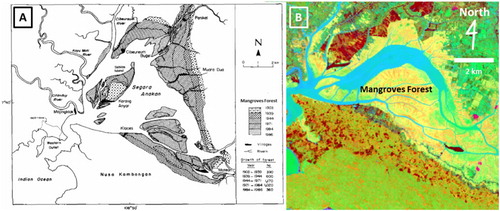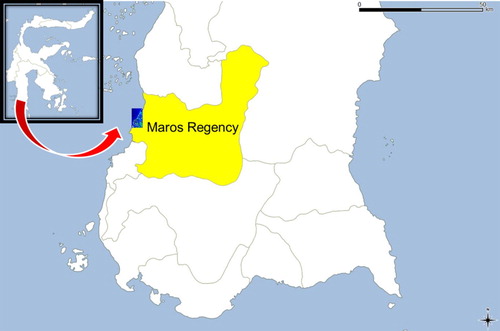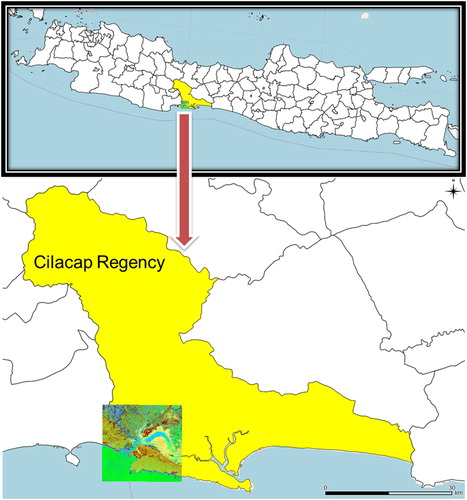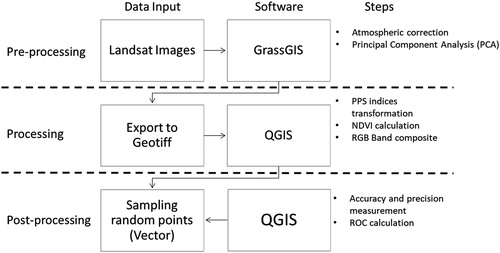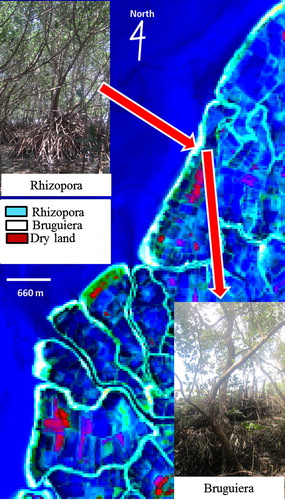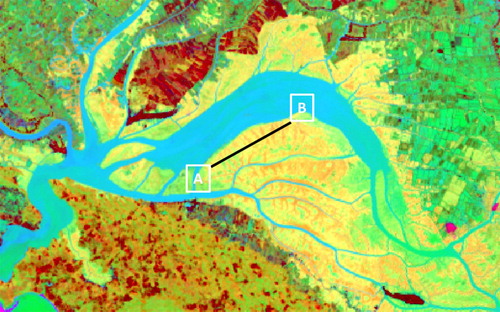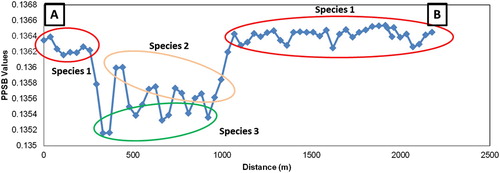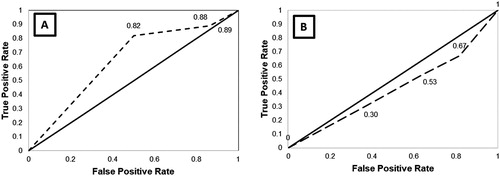Figures & data
Figure 6. Mangroves species of Bruguiera is dominant along the coastline and located between Rhizophora.
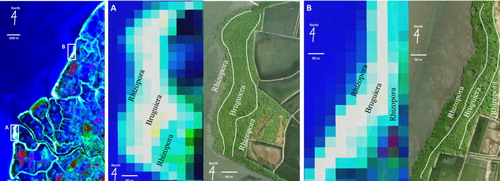
Figure 7. Processed image of mangrove forest in Maros Regency using PPS indices multi-bands (left) and conventional RGB (542) multi-bands without transformation (right).
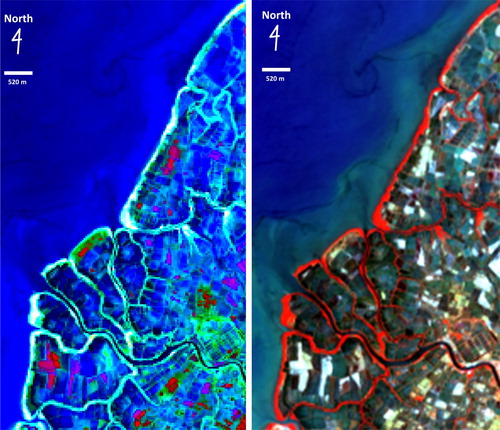
Table 1. Accuracy assessment result of Bruguiera.
Table 2. Accuracy assessment result of Rhizophora.
Figure 8. Mangrove forests in Segara Anakan. A. Mangrove forests are isolated in three different colors; green, yellow, and orange, B. Conventional RGB (542) multi-bands without transformation only show the vegetation in red without any detail differentiation.
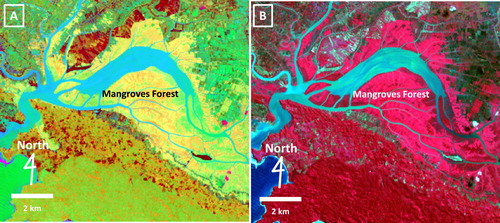
Figure 9. A. Scatterplot of a regression model of PPSB vs. NDVI, where r2 = 0.877. B. A regression model of PPSG vs. NDVI, where r2 = 0.021. C. A regression model of PPSW vs. NDVI, where r2 = 0.094.

Figure 13. A. Shoreline and mangroves forest growth from 1903 to 1986 (White, Martosubroto, and Sadorra Citation1989); B. Mangroves forest in 2014.
